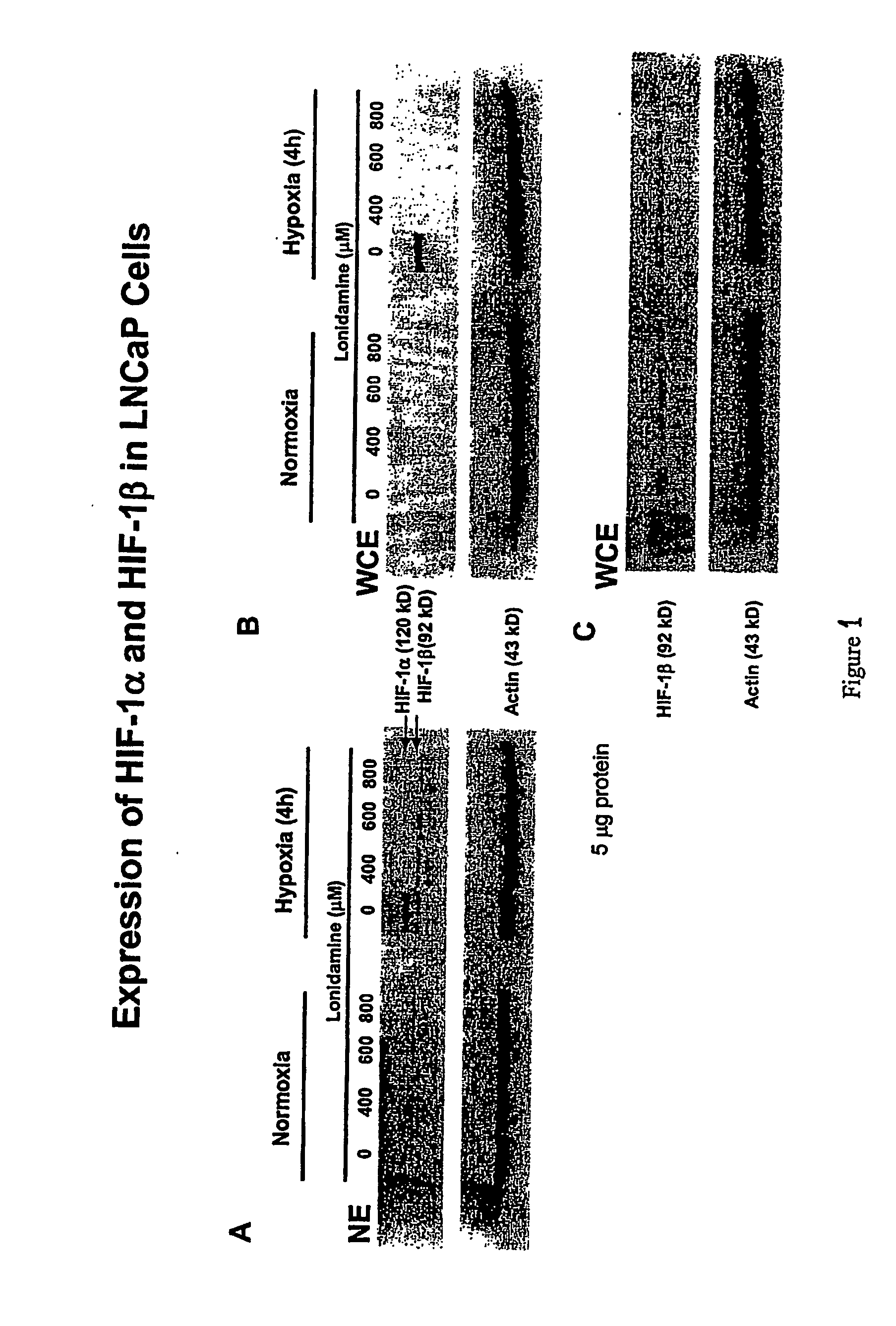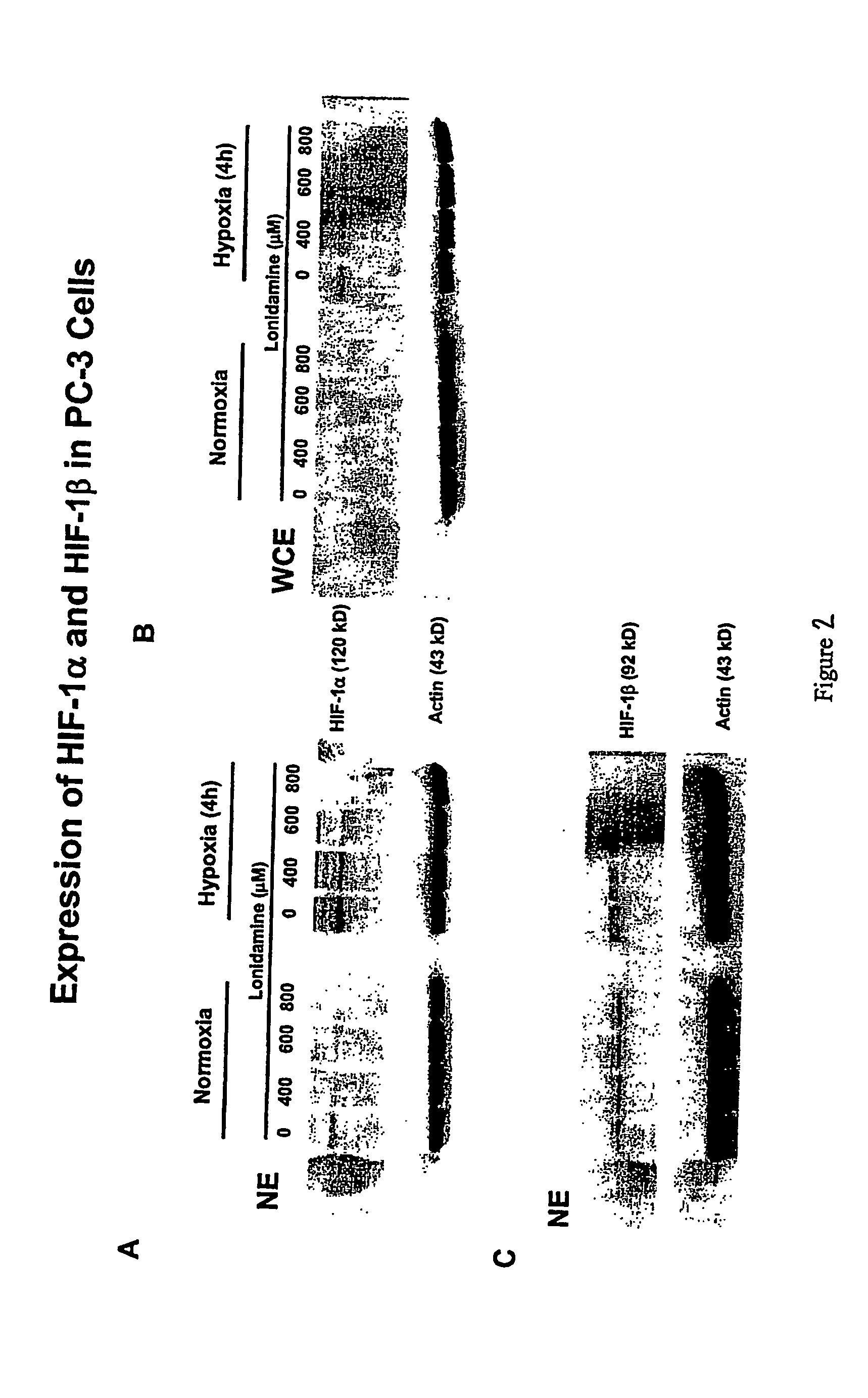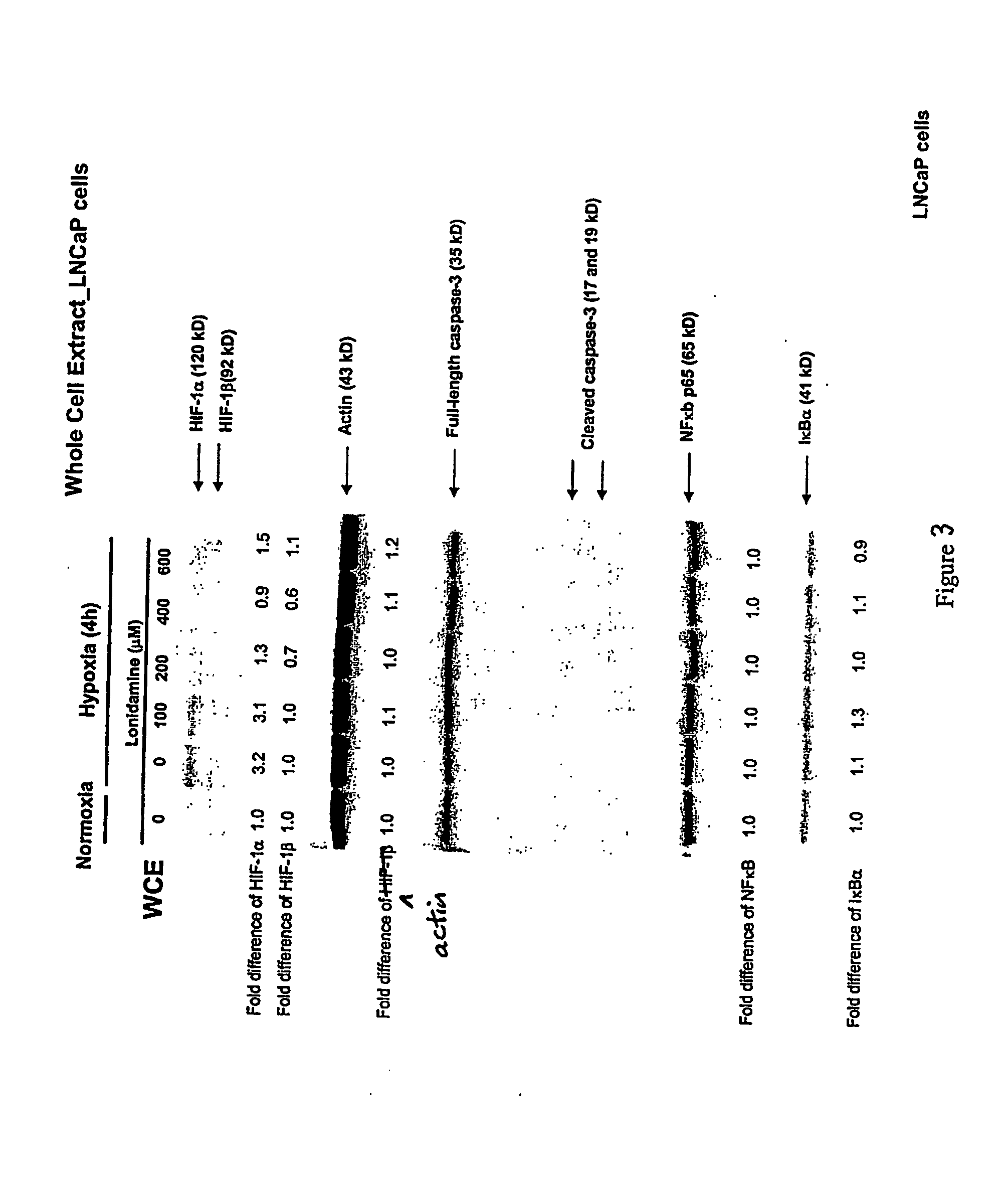Combination therapies for the treatment of cancer
a cancer and therapy technology, applied in the field of cancer treatment, can solve the problems of not killing all cancer cells in the patient, unable to generate the energy required, and cancer is a deadly diseas
- Summary
- Abstract
- Description
- Claims
- Application Information
AI Technical Summary
Benefits of technology
Problems solved by technology
Method used
Image
Examples
example 1
Lonidamine Reduces Expression of HIF-1 Alpha in Prostate Cells
[0162] This example shows the effects of lonidamine treatment on HIF-1alpha expression in two cell lines derived from metastatic lesions of human prostate cancers. LNCaP is a citrate-producing cell (ATTC No. CRL-1740) while PC3 is citrate oxidizing cell (ATTC No. CRL-1435). See Franklin et al.; 1995, “Regulation of citrate metabolism by androgen in the LNCaP human prostate carcinoma cell line.”Endocrine 3:603-607. Cells may be obtained from the American Type Culture Collection (ATCC), P.O.Box 1549, Manassas, Va. 20108 USA.
[0163] The data demonstrate that lonidamine is an inhibitor of hypoxia-induced accumulation of HIF-1alpha in these cell lines under the conditions tested. In addition, citrate-producing cells (LNCaP) displayed greater sensitivity to lonidamine treatment compared to citrate-oxidizing cells (PC3). While the results of these experiments do not definitively establish the mechanism or specificity of inhibit...
PUM
| Property | Measurement | Unit |
|---|---|---|
| body weight | aaaaa | aaaaa |
| body weight | aaaaa | aaaaa |
| body weight | aaaaa | aaaaa |
Abstract
Description
Claims
Application Information
 Login to View More
Login to View More - R&D
- Intellectual Property
- Life Sciences
- Materials
- Tech Scout
- Unparalleled Data Quality
- Higher Quality Content
- 60% Fewer Hallucinations
Browse by: Latest US Patents, China's latest patents, Technical Efficacy Thesaurus, Application Domain, Technology Topic, Popular Technical Reports.
© 2025 PatSnap. All rights reserved.Legal|Privacy policy|Modern Slavery Act Transparency Statement|Sitemap|About US| Contact US: help@patsnap.com



